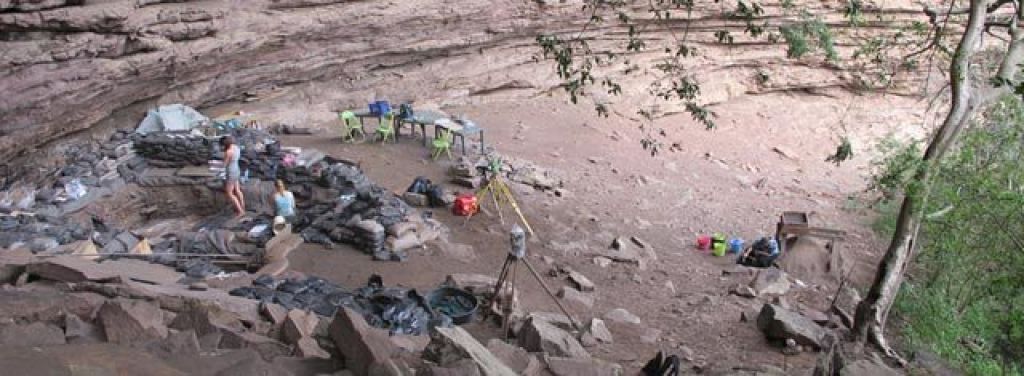Insight into what makes us human – new fossil display at Maropeng
A new fossil display, What makes us human: The significance of the Sibudu Cave shelter, opens at Maropeng on March 2. It will spark your imagination as to how early Homo sapiens lived, and will leave you impressed at what fossil remains can tell us about the behaviour of our ancient human ancestors.
As you walk across your floor at night, either tiled or carpeted, to climb into your soft bed, you may wonder how early humans slept, and what their living areas were like. Archaeologists have uncovered new evidence, at the Sibudu rock shelter in KwaZulu-Natal, for what they call “plant bedding”, which sheds light on this.
Fossilised grass stems and leaves, some dating back 77,000 years (during the Middle Stone Age), show that our ancestors collected plants (most likely from the nearby uThongathi River, in this case) and placed them on the ground to sleep on – and possibly to live on and work on too.

Scientists can also tell that these humans relaid the bedding several times, indicating that they occupied the same land for some time. They would also frequently burn the bedding, possibly to get rid of unwelcome insects and other visitors.
Perhaps most fascinating of all, analysis of the fossilised leaves shows they had chemical properties that repel mosquitoes. These may have been some of the first humans to discover a way of repelling the pesky bloodsuckers.
These studies were conducted through a large collaborative effort involving many local and international scientists. The studies’ aim is to reconstruct the world of these ancient humans and to hypothesise about their behaviour.
Maropeng Curator Lindsay Marshall reminds us that, although the fossilised grass stems and leaves on display are old, humans are older. “Our species, Homo sapiens, emerged much earlier, roughly 200,000 years ago,” she says.
Although the first humans were biologically identical to modern humans, scientists are interested in how human behaviour changed and evolved from the time of these first humans to today.
“This is why there is so much interest surrounding finds such as these,” says Marshall. “They are pieces to the puzzle of our species and its history.”
These fossils range from 77,000 years to 38,000 years ago, and will be part of the exciting new fossil display at Maropeng.
“There will also be displays of other significant finds from the Sibudu rock shelter, because the site has produced several artefacts of interest, such as the oldest bone arrow and the oldest needle,” Marshall explains.
The exhibition will take you on a journey into the mindset of humans who predate recorded history. Marshall says this new fossil display will also highlight other aspects of evolution, such as how the thinking process of humankind has evolved: “We need to look at these fossils and ask, do these artefacts reflect inhabitants who were behaviourally modern human beings? At what stage did this occur?”
The fossil display will run until the end of May 2012.